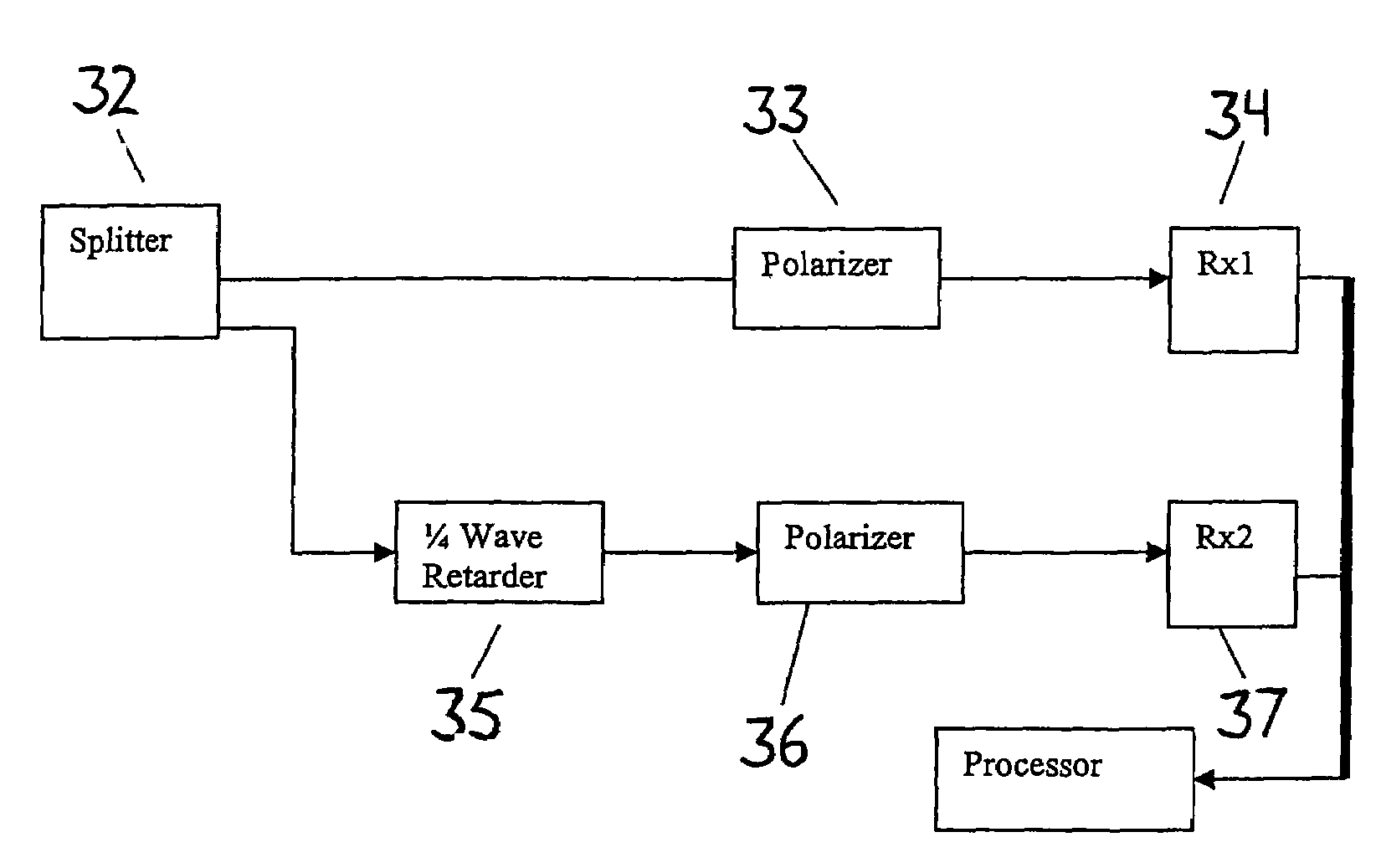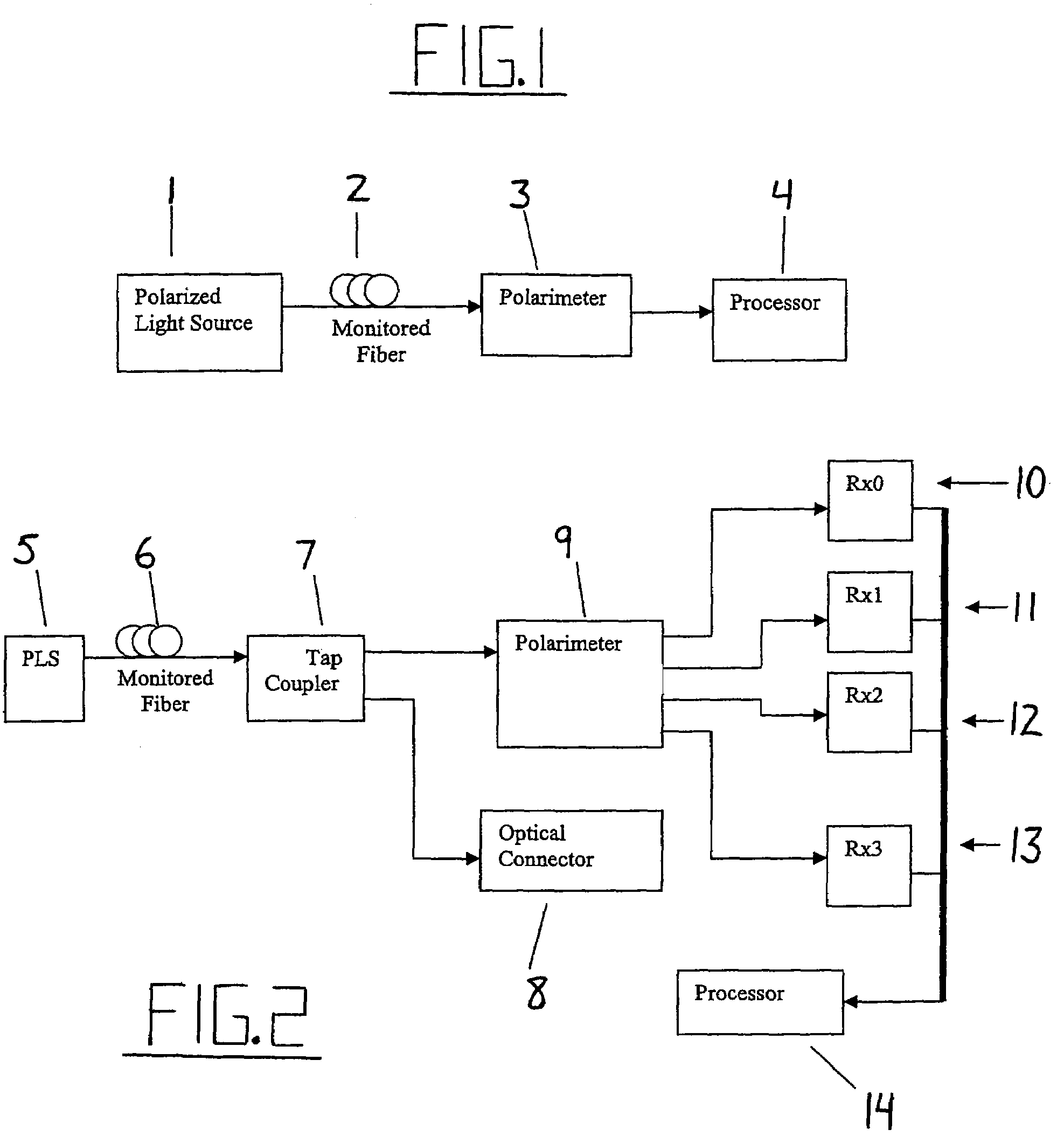Intrusion detection system for use on single mode optical fiber using a polarimeter
a detection system and optical fiber technology, applied in the field of single-mode optical fiber detection, can solve the problems of affecting the current idss, burdening processing power, and adding to the complexity of the network
- Summary
- Abstract
- Description
- Claims
- Application Information
AI Technical Summary
Benefits of technology
Problems solved by technology
Method used
Image
Examples
Embodiment Construction
[0079]Fundamental to the present invention is the mechanics or more simply by launching a light source of stable polarization 1 into a single mode fiber 2. At the remote or receive end the single mode fiber is connected to the input of an optical polarimeter 3. This polarimeter measures the SOP of the monitored light. The output of this polarimeter is connected to a processor unit 4; such as, but not limited to, a microcomputer. Handling of the fiber cable causes a local mechanical disturbance to the fiber. This mechanical disturbance, while not introducing detectable macro or micro bending losses, causes the polarization orientation to change. This is detected by the polarimeter and reported to the processor.
[0080]A more comprehensive view is now described in conjunction with FIG. 2. Optical signal feeds the polarimeter 9, which converts it to the four so-called Stokes Parameters: S0, S1, S2, and S3 as detected by receivers Rx0–Rx310, 11, 12, and 13. These parameters collectively d...
PUM
 Login to View More
Login to View More Abstract
Description
Claims
Application Information
 Login to View More
Login to View More - R&D
- Intellectual Property
- Life Sciences
- Materials
- Tech Scout
- Unparalleled Data Quality
- Higher Quality Content
- 60% Fewer Hallucinations
Browse by: Latest US Patents, China's latest patents, Technical Efficacy Thesaurus, Application Domain, Technology Topic, Popular Technical Reports.
© 2025 PatSnap. All rights reserved.Legal|Privacy policy|Modern Slavery Act Transparency Statement|Sitemap|About US| Contact US: help@patsnap.com



